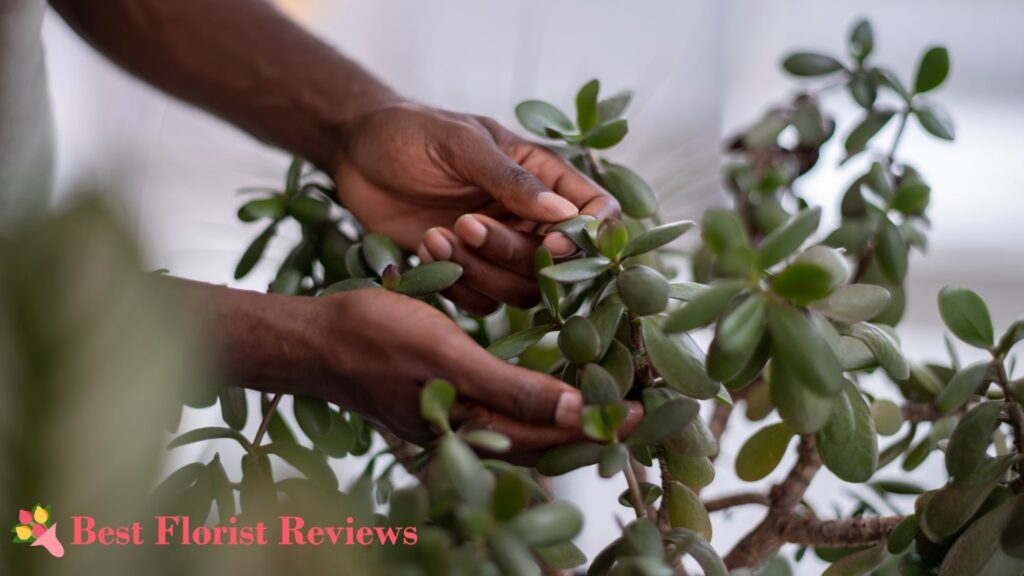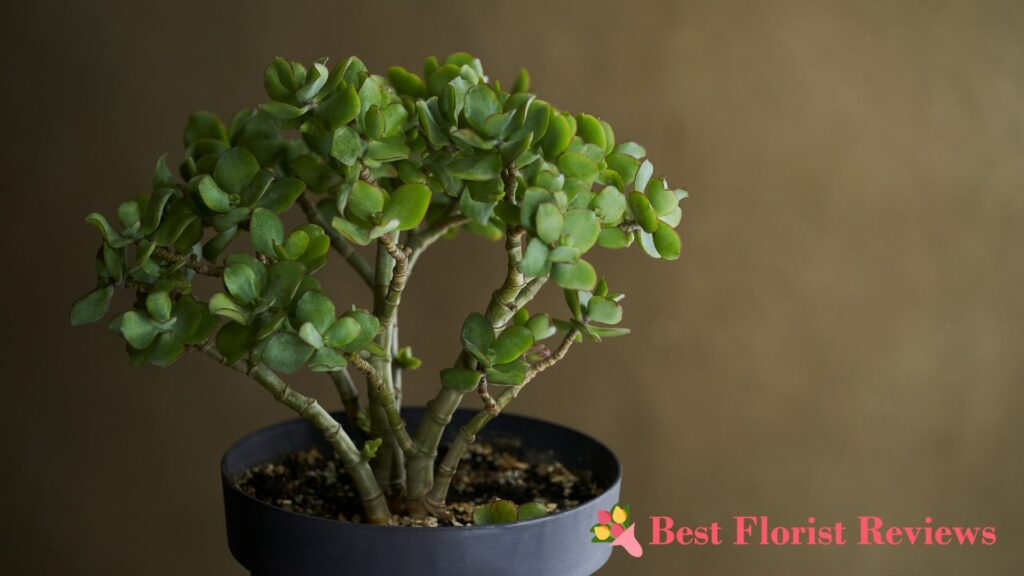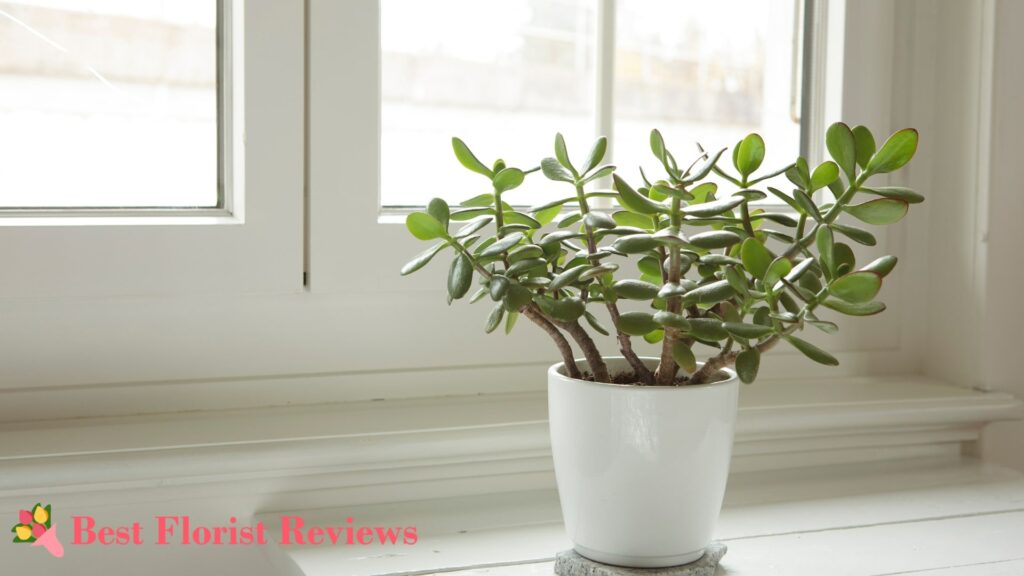Once you have one jade plant, it’s hard not to fall head over heels for its laidback nature and minimal care requirements. After growing one, many plant parents just find themselves wanting more of them.
If you’ve ever caught yourself wanting to multiply your jade plant or wanting to share its beauty with your friends and loved ones, we got you!
In this guide, we’ll explore three hassle-free propagation methods and provide step-by-step instructions for each method to help you successfully expand your jade collection.
When to Propagate a Jade Plant


The key to successful propagation for any plant is excellent timing.
Jade plants are more responsive to the propagation process during warmer months, around spring to early summer, so these are the best times to propagate.
Jade plants are actively growing during spring and summer, so they allocate more energy to new growth. This helps them heal wounds from cutting stems or leaves faster and produce roots much quicker.
Avoid winter when propagating because jade plants are dormant, so the cuttings may not produce roots. The plant may also not respond well to the stress of propagation.
How to Propagate a Jade Plant


You can propagate a jade plant through various methods, including planting leaf and stem cuttings into a new soil mix, submerging stem cuttings into a glass of water, and dividing the root system of the jade plant.
Jade plants are actually one of the easiest plants to propagate as they’re very resilient and adaptable. If you follow our instructions on how to propagate them, you’ll most likely succeed in having new jade plants.
How to Propagate Jade Plant in Soil
Step 1: Cut a stem or branch from a healthy jade plant.
When propagating a jade plant through stem cutting, choose a branch about 3 to 4 inches long so it can be buried in the soil. Make sure to also select a branch that doesn’t have any sign of disease or damage.
Use sharp and sterile pruning shears to cut the stem or branch.
Step 2: Remove leaves from the stem.
Remove the leaves sitting at the bottom of the stem. This ensures that the leaf won’t get in direct contact with the soil and allows the stem to direct most of its energy to developing roots.
Keep these leaves and propagate them separately.
Step 4: Allow the cutting to form a callus.
Keep the stem and leaf cuttings in a warm location for a few days to let the wounds from the cut heal and dry. Allowing the cut end to callus before planting can help prevent rotting once the stems are planted.
Step 5: Apply rooting hormone.
If you have rooting hormone available at home, dip the cut end of the stems and leaves into the rooting hormone. It can help the stems and leaves develop roots faster and increase the chance of successful propagation.
If you don’t have rooting hormone, it’s totally okay. The stems and leaves will still be able to develop roots.
Step 6: Prepare the pot and soil.
Prepare small pots that have drainage holes for your stem cuttings. Fill the pots with the same soil mix you’re using for the main plant or a well-draining succulent mix.
Step 7: Plant the cutting to a new pot.
Once the cut ends of the stems and leaves form a callus, you can plant them into the pots you prepared. Bury the stems about an inch or two deep, and gently press the soil around them to provide stability.
As for the leaf cuttings, lay them horizontally on the soil. Cover the cut end with some soil, and they’ll start rooting.
Step 8: Water the plants.
Mist the soil to keep it moist to encourage the stem and leaves to produce new roots.
Step 9: Cover the pots with clear plastic.
Cover the cuttings with clear plastic to help maintain humidity during the initial stages of rooting.
How to Propagate Jade Plants in Water
Step 1: Cut a branch from a healthy jade plant.
Choose a healthy stem or branch from a jade plant. Branches with several leaves are generally preferred since they have better chances of developing roots.
Cut the branch using a sharp and sterile knife or scissors. Make sure the cutting is about 3 to 4 inches to increase the chances of roots forming.
Step 3: Remove the lower leaves of the stems.
Remove the leaves at the bottom to expose a few inches of the stem. This helps prevent leaves from touching the water and getting moldy or slimy.
Step 4: Let the cut wounds heal.
Let the cut end of the branches form, heal, and callous over. This will prevent the branches from rotting once they’re submerged in water.
Step 5: Apply rooting hormone.
This step is optional, but it can help the branches produce roots faster if you dip them in a cup of rooting hormones.
Step 5: Prepare a glass or vase filled with water
Fill a glass or vase with water. It’s better to use distilled water, but if you want to use tap water, leave the glass of water for 24 hours to let the chlorine in tap water evaporate.
Step 6: Place the cutting in the glass of water
Place the cuttings into the glass or vase you prepared. Make sure that the cut end of the stem is submerged.
Step 7: Change water every few days
Check the water regularly and change it every few days to prevent stagnation and the growth of harmful bacteria. Roots won’t grow if the water is dirty, and the cutting will only die.
Step 8: Transplant the cuttings into soil
You can transplant the cuttings into the soil once the inches are a few inches long. It will usually take several weeks before the roots are long enough to be transplanted.
How to Propagate Jade Plants by Division
Step 1: Choose a healthy parent jade plant.
Jade plants will produce different stems as they grow. Some of these stems are offsets, meaning they’re small plants growing separately from the jade plant.
Choose a jade plant that already has one or two offsets if you want to propagate through division.
Step 2: Prepare new pots and soil for the offsets.
Put a layer of well-draining succulent mix in the new pots. If you use a different type of soil mix for the parent plant, you can also use that for the offsets as long as the mix is well-draining.
Ensure that each pot you use has drainage holes to prevent the soil from getting soggy.
Step 3: Gently take the jade plant out of its pot.
Gently squeeze if you’re using a plastic pot, or tap the side of the pot to loosen the soil inside. Carefully remove the jade plant from the pot once the soil is loose.
Step 4: Divide the jade plant.
Gently separate the smaller plants from the main jade plant. They’ll naturally break apart if you pull them carefully, but you can also use sterile scissors to divide some of the roots.
Step 5: Tease out the roots to make sure they aren’t tangled with each other.
Gently tease out the roots to encourage them to spread in their pot. This will also ensure that they’re not tangled with each other, which might hinder their ability to settle in the new soil.
Step 6: Plant divisions in new pots.
Dig a small hole in the center of the new potting mix and place the divisions in it. Fill the remaining spaces of the pot with soil mix and firm the soil around each division.
The plants will be wobbly at first since the roots are still quite small and are still establishing themselves in the new soil.
Step 7: Hold off watering for a week.
Don’t water the plants immediately after planting them to give the roots time to adjust and establish. You can moisten the soil after a week but don’t water it as much as you do with established plants.
After three to four weeks, you can thoroughly water the plant and treat it like an established jade.
Is it better to propagate a jade plant in water or soil?


It’s better to propagate a jade plant in soil than in water since it’s already in its preferred growing medium, and this reduces the stress caused by transitioning from water to soil.
That said, jade plants can still be propagated successfully in water. Many might prefer this method because they can easily observe the progress of root development, and there’s no risk of overwatering.
Jade plants are generally easy to propagate and will most likely root successfully whether you use soil or water.
How long does it take for jade cuttings to root?


It typically takes two to three weeks for jade cuttings to start rooting. The roots will be established in four to six weeks.
Stem cuttings will generally root faster than leaf cuttings.
It’s important to be patient during propagation and avoid disturbing the cuttings while forming roots. Resist the temptation to pull the cuttings out of the soil or water just to check the roots, as this will disrupt the rooting process.



